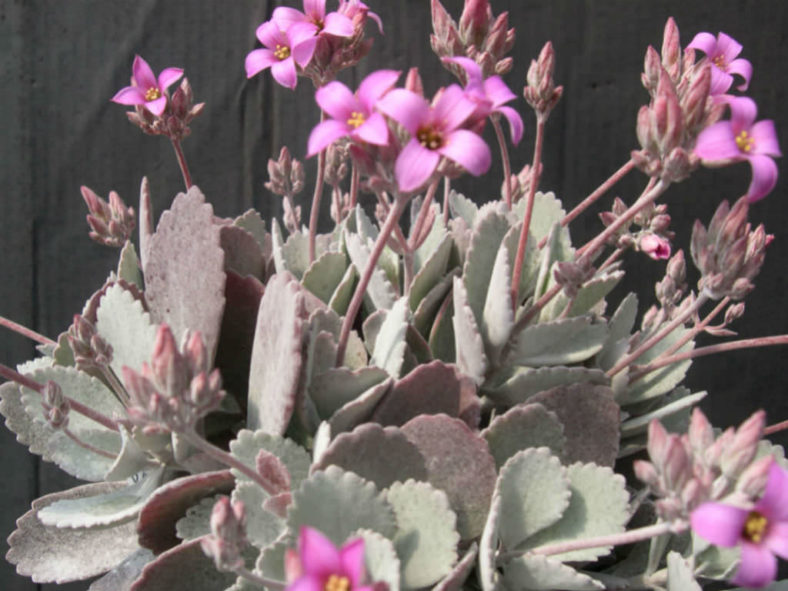Scientific Name
Kalanchoe pumila Baker
Common Name(s)
Flower Dust Plant
Synonym(s)
Kalanchoe brevicaulis, Kalanchoe multiceps, Kalanchoe pumila f. venustior
Scientific Classification
Family: Crassulaceae
Subfamily: Sedoideae
Tribe: Kalanchoeae
Genus: Kalanchoe
Origin
Kalanchoe pumila is native to central Madagascar. It grows in rocky soil at elevations of about 6,560 feet (2,000 m).
Description
Kalanchoe pumila is an attractive, shrubby succulent with arching stems that bear fleshy leaves with a white, powdery covering. It can grow up to 12 inches (30 cm) tall. The leaves are obovate, have purple margins toothed in the upper part, and can measure 1.6 inches (4 cm) long and 0.8 inches (2 cm) wide. The white bloom on the leaves is easily rubbed or washed off.
The flowers are erect, red to purple or pink with conspicuous yellow anthers, and appear in few-flowered corymbose panicles from late winter to early spring.

Hardiness
USDA hardiness zones 9b to 11b: from 25 °F (−3.9 °C) to 50 °F (+10 °C).
How to Grow and Care
Kalanchoe care is minimal, but be cautious about light levels. Intense sunlight can burn the tips of the leaves. When growing Kalanchoes, place pots in partial sun to light shade areas.
The flowering varieties are highly rewarding for their colorful and long-lasting flowers. They prefer bright, sunny locations, especially in the growing season. Water moderately from fall to winter when the growth is most active. Reduce watering during the hottest summer months when the plants are mostly dormant and winter when the growth slows significantly. Let the soil surface dry out between waterings. Watch the fleshy leaves for signs of water distress. An ordinary potting soil mix is fine. Feed bi-weekly during the growing season with a liquid fertilizer, or use slow-release pellets.
These small plants require repotting every few years. When repotting, take additional care in handling, as the leaves are somewhat brittle and can snap easily. Clay pots work exceptionally well for planting Kalanchoes. Ensure pots drain well and saucers empty easily.
Learn more at How to Grow and Care for Kalanchoe.
Links
- Back to genus Kalanchoe
- Succupedia: Browse succulents by Scientific Name, Common Name, Genus, Family, USDA Hardiness Zone, Origin, or cacti by Genus
Photo Gallery
Click on a photo to see a larger version.


